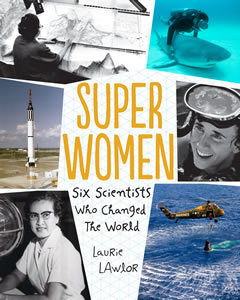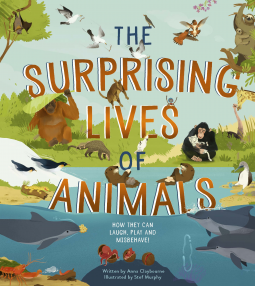Book Review: A Window into the Ocean Twilight Zone: Twenty-Four Days of Science at Sea by Michelle Cusolito
Early Book Review: The Wolves and Moose of Isle Royale: Restoring an Island Ecosystem by Nancy Castaldo
Early Book Review: Girls Solve Everything: Stories of Women Entrepreneurs Building a Better World by Catherine Thimmesh, Melissa Sweet
Book Review: Invented by Animals: Meet the Creatures who Inspired our Everyday Technology by Christiane Dorion, Gosia Herba
Book Review: Scientists Who Dared to Be Different by Emily Holland
Scientists Who Dared to Be Different by Emily Holland is an illustrated nonfiction book that tells the stories of 16 pioneering figures of strikingly different backgrounds. People of varied ethnicity, nationality, gender, lifestyle, and wealth. What they all have in common - other than their genius - is their bravery, their resilience, and their ability to think beyond the bounds of established convention. The scientists talked about include Valentina Tereshkova, the extraordinary first woman in space, Marie Sklodowska Curie, the great pioneer of radioactivity, and first person to win two Nobel prizes. Galileo Galilei, the great physicist who bravely stood by his cosmic theories in the face of the Roman Inquisition. Katherine Johnson, the "human computer" who played a key part in NASA's space program and Stephen Hawking, the world-famous physicist who overcame physical paralysis to transform our understanding of black holes.
Scientists Who Dared to Be Different is a well rounded collection of ten to fifteen page biographies of these sixteen scientists. I liked that the scientists chosen were a blend of well known individuals and those that do not receive much recognition. The scientists profiled here also have a good deal of variety. They are from different genders, races, background, and so on. Mental health and society obstacles they faced were touched on, and I think the book does a good job of taking these names (both familiar and not) and making the people real and relatable. While those topics can be hard, the author did a good job of keeping the important aspects of these scientist's lives in the narrative while being completely age appropriate and accessible to young readers. The book can be read as a whole, or by taking it a scientist at a time. The illustrations are crisp and add visual interest to the page.
I think this would be a great addition to a school or classroom library, or for a child already interested in science or reading biographical material.
Early Book Review: The Surprising Lives of Animals: How They Can Laugh, Play and Misbehave! by Anna Claybourne
Book Review: Super Women: Six Scientists Who Changed the World by Laurie Lawlor
 Super Women: Six Scientists Who Changed the World
by Laurie Lawlor profiles six amazing women who defied prejudice to succeed in the sciences using genius, ambition, and perseverance. Each of these pioneers refused to take no for an answer, pursuing their passions through fieldwork, observations, laboratories and research vessels in the face of sexism. Lawlor tells the stories of Eugenie Clark, an ichthyologist who swam with sharks; Marie Tharp, a cartographer who mapped the ocean floor; Katherine Coleman Johnson, a mathematician who calculated trajectories for NASA flights; Florence Hawley Ellis, an anthropologist of Pueblo cultures who pioneered tree-ring dating; Gertrude Elion, a pharmacologist who developed treatments for leukemia and AIDS; and Margaret Burbidge, an astrophysicist who formulated a theory of quasars.
Super Women: Six Scientists Who Changed the World
by Laurie Lawlor profiles six amazing women who defied prejudice to succeed in the sciences using genius, ambition, and perseverance. Each of these pioneers refused to take no for an answer, pursuing their passions through fieldwork, observations, laboratories and research vessels in the face of sexism. Lawlor tells the stories of Eugenie Clark, an ichthyologist who swam with sharks; Marie Tharp, a cartographer who mapped the ocean floor; Katherine Coleman Johnson, a mathematician who calculated trajectories for NASA flights; Florence Hawley Ellis, an anthropologist of Pueblo cultures who pioneered tree-ring dating; Gertrude Elion, a pharmacologist who developed treatments for leukemia and AIDS; and Margaret Burbidge, an astrophysicist who formulated a theory of quasars.







